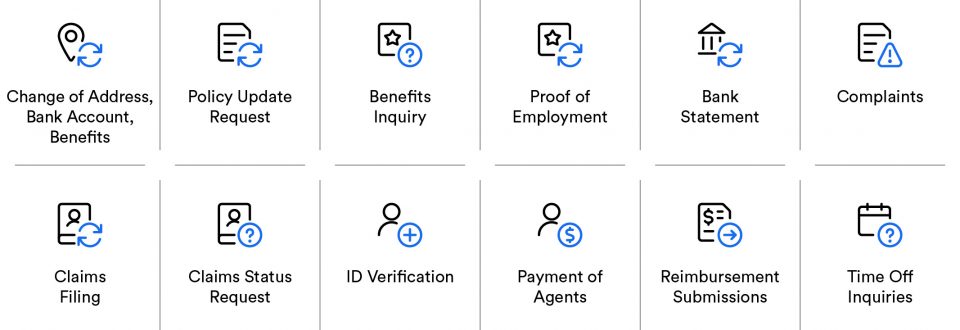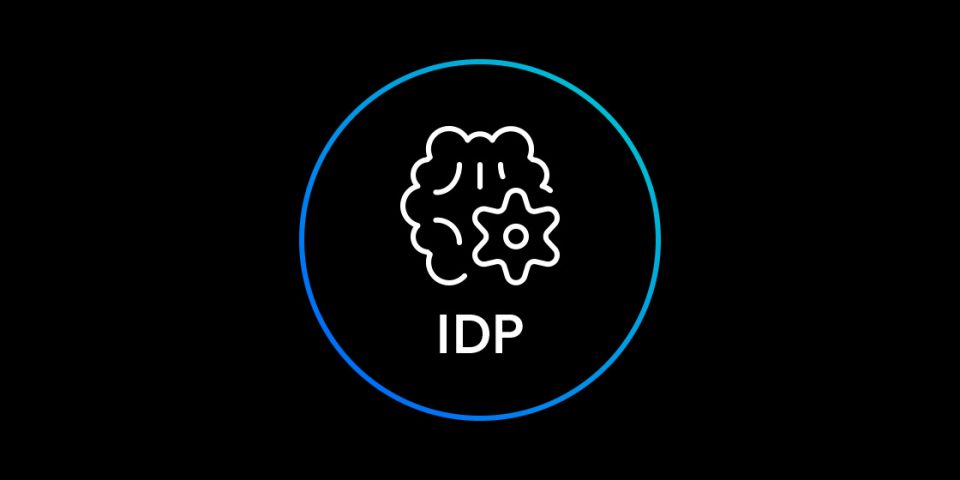How you can save hours by classifying email intent with automation
How often have you contacted a business only to wait 72 hours for a response? Studies show that the average email response time is 42 hours. The problem with long delays? They’re so frustrating!
Today, customers want requests handled quickly and with round-the-clock support. As a result, businesses must identify consumer intents efficiently and respond appropriately to stay competitive in a digitally transformed landscape.
Jan 10, 2023 by Craig Woolard

Despite the frustrations that come along with overflowing inboxes, the reality is that email is ultra convenient. Customers use email for all kinds of requests — and sometimes — they could have more than one. It’s interesting to know that for every 24 hours, there are more than 3 billion business emails sent and received worldwide.

Moreover, global data experts forecast daily email traffic will grow to over 4.5 billion by 2025. Wouldn’t it be nice to have an email classification system that categorizes emails for us, so we can focus on more revenue generating tasks?
How do you categorize emails?
Your organization likely receives emails that serve many different purposes.
For example, in the insurance industry, you’ll handle a wide variety of request emails — including requests to file a claim, status requests, policy update requests, and requests for information on eligibility and coverage. Insurance professionals also handle reimbursement submissions with critical information stuck inside file attachments — such as PDFs or images with handwritten text.
When a natural disaster strikes, claims adjusters have to juggle dozens of claims emails that could contain attached photos of receipts and other unstructured policyholder documents.
Likewise, banking institutions handle a high volume of emails that primarily come with additional information locked away in supporting documents — such as ID verification emails, proof of employment, change of address requests, and other documents critical to the KYC process.
Keep in touch
But manually reading and sorting emails is labor-intensive work that gums up internal systems and leads to losses in productivity and revenue. Instead, intent recognition AI could automatically sort incoming emails and intelligently categorize customers for a big boost in efficiency — especially when time is critical.
Furthermore, there is often organizational confusion surrounding “which department handles what?” This leads to more delayed responses, unfulfilled requests, frustrated customers, and a poor customer service experience.
However, an end-to-end intelligent document processing (IDP) platform with intent classification built-in creates a highly accurate email processing system that saves hours of manual work. Learning how AI and automation combine to unlock hard-to-reach data will ensure customers receive the help they request.
This guide will discuss intent classification, how it works, and why it’s essential in an effective email processing system. Then, we will show how intelligent document processing can provide this automation as a complete end-to-end solution that transforms unstructured data from emails into business value.

What is email intent classification?
In the artificial intelligence (AI) world, intent classification is the technology that identifies the purpose or goal behind incoming messages and automatically categorizes them into groups.
Intent classification uses machine learning (ML) and natural language processing (NLP) to automatically identify the purpose or intention behind a piece of text.
In intent classification, a natural language processing (NLP) model reads the incoming text from emails and understands the meaning. Next, a machine learning (ML) model learns what to do with the meaning that NLP understands. Based on the way you train it — it intelligently sorts the emails into categories.
Think of it like your first day in a mailroom. You already know how to read the envelopes (NLP) but you need to learn which floor or office all the departments are in (ML training). Once you learn that, you can organize and route all the incoming mail.
What is customer intent?
Customers interact with companies for a variety of reasons. The customer’s “intention” can be identified as one of many goals they want to achieve when interacting with companies.
For example, a potential sales prospect might reach out with a pricing question. At the same time, a current customer may seek help with a problem that needs a solution — indicating a customer service or technical support issue.
Customers want their requests answered quickly and as efficiently as possible. Companies that fail to meet this primary consumer demand risk losing to the competition.

The challenges with traditional intent classification
Manually categorizing each type of email based on its content and responding with the right message takes hours of precious company time. It also slows down response times.
In the big data world, emails are a type of “semi-structured” or “unstructured” document. The text in the body and subject field of an email is completely free-form and typically lacks a fixed “structure.” Consequently, building rules that can sort incoming unstructured email messages reliably is very challenging.
Now, let’s consider the challenge at scale. How many emails does your team receive daily? Is it in the hundreds? Perhaps in the thousands? Now, how many have attachments — such as PDFs — or even images of handwritten text?
Of course, attachments amplify the complexities of email further. However, even at just a base level, simply sorting the free-form text in emails into categories of intents is a complex task requiring humans or sophisticated AI.
Additionally, the attached documents could contain relevant information to the customer’s goal — making it difficult for legacy rules-based approaches to sort customer requests accurately.
Furthermore, the complexity compounds with shared inboxes — such as shared “contact@,” “help@,” or “support@” email addresses — so conventional triaging approaches yield inconsistent results that are marginal at best.

How does intent classification work?
Intent classification helps businesses rapidly and intelligently categorize emails.
Intent classification uses natural language processing (NLP) and other AI models to analyze the incoming text data from multiple communication channels, including emails, social media posts, or other textual messages.
Then, it automatically segments the data stream into predefined categories, representing “intents” (or the reasons) customers send messages.
Intent classification uses examples of human language to understand the whole context of an email message. For example, with training, a machine learning algorithm can eventually recognize that certain words or phrases — such as “buy” or “interested” — might signal a customer’s intent to purchase.
However, advanced NLP models trained on many examples of human language can take this capability much further. For example, the word “want” could appear in every customer email — making it nearly impossible to match the keyword with the right intent.
Nevertheless, an advanced NLP model trained on millions of human language samples will understand the nuances between “I saw your ad offering X, and I want it” vs. “I want you to make it right.”
In the first statement, “I want it,” there is an interest in buying something, whereas the latter is probably a support request. Similarly, “I want to see X” is likely an intent to provide product feedback.

How do you identify customer intent?
An intent classifier is a category (or tag) that automation designers assign to groups of incoming messages. For example, you could create labels such as “Interested,” “Ready to buy,” or “Needs more information” to classify more specific examples of customer intents within your sales process.
Each time you classify emails, the AI model’s ability to accurately understand customer intent could improve (as long as the user adds correct training data to the system). Doing so trains the machine learning model to recognize new customer emails as potential prospects.
On the other hand, if you add incorrect training data to a system, you will make the results worse, not better. So to ensure the most accurate results, intelligent document processing platforms like Automation Hero’s Hero Platform_ allow users to review the AI’s output before re-training the system.
Characterizing types of intents in email
Since customers use email to interact with companies for different reasons, tagging emails with intent classifiers can automatically sort emails, triage them, and send a rapid response.
For example, tagging incoming email requests as “price quote requests,” “product demo requests,” or “purchase order requests” could help your business identify the source of potential leads. It could also provide insight into their position in your sales funnel and how close they are to completing a purchase.
Depending on how “ready-to-buy” potential customers are, intent classifiers can help identify the leads showing a “high intent” to purchase. Intelligent document processing platforms with classification built-in can automate rapid responses along with the appropriate message to engage. It could also forward the email to the best individual or team to handle the request.

With explicit intents recognized in sales and marketing analytics, you could quickly generate reports based on the intent data and provide business insights on conversion rates, interest levels, upsell opportunities, and much more.
The more examples you provide the model, the better it will identify these patterns.
How to classify emails
Specific intent classifiers can also separate “ready to purchase” emails from other non-sales-related emails, such as “customer service requests.”
Training your AI model with more specific intent classifiers refines the overall email classification strategy — accurately triaging requests for technical support vs. customer service and segmenting all sales leads to the appropriate departments for speedy, efficient handling.
Automation Hero combines AI with next-gen patent-pending OCR to classify documents. Our AI can read and understand customer intents so that mishandled emails are a thing of the past.
Additionally, our platform triages emails and extracts essential information from the email content directly — along with the data locked inside unstructured email attachments.
Our email processing automation solution is an end-to-end intelligent document processing (IDP) platform with next-gen AI that’s capable of detecting the intent from any document.
Hero Platform_ can automatically sort emails (including attachments) and even sends an automated responses if clarification or supporting documents are needed.

Advanced intent analysis
Businesses frequently need to extract critical data from a wide variety of unstructured email attachments — such as PDFs, forms, spreadsheets, infographics, slides, text files, and even photos of handwritten text. These attachments often contain vital information necessary for a business to understand and reply to its customers.
However, extracting unstructured data from emails is challenging due to the amorphous layout of content in emails and attachments. So, how can businesses extract the essential data that provides even more insight into customer intents from emailed attachments?
Advanced text extraction technologies (such as those automated by intelligent document processing) go deeper than traditional email classification tools.
For example, intelligent document processing can read email attachments and extract critical data related to customer intent from unstructured documents — including location data, dates, and handwritten signatures.
IDP platforms like Automation Hero’s Hero Platform_ apply next-level intelligent document processing technology to unlock unstructured data stuck inside emailed images and pdf files — reaching customer intent locked in emails on a deeper level than previously possible.

Why is intent classification useful?
Intent classification allows businesses to adopt a more customer-centric approach — especially in customer service and sales. When companies respond quickly and appropriately, customers will trust your business to support them.
The business impact of intent classification
Because customers get the help they are looking for from the appropriate department quickly, the faster response times lead to interdepartmental improvements that can impact customer retention, loyalty, and satisfaction across the entire organization.
Everything improves — from responding to leads faster to handling higher volumes of incoming queries and offering more personalized services.

Seven ways to use intent classification with examples
Incorporating intent classification into a well-designed email processing automation system can save hours of company time which also improves the customer experience.
However, an end-to-end intelligent document processing platform that reads documents the same way as humans is the most accurate and effective way to classify emails based on intent.
Here are seven ways to use intent classification with an IDP platform to automate email processing:
1. Boost sales with intent classification
Streamlined processes directly impact your team’s ability to focus on higher-value tasks — such as generating more revenue.
Due to the instant gratification customers are used to, some prospects expect a response in less than 6 hours. So, the faster sales teams can detect and respond to leads that signal an intent to purchase, the greater their odds of closing a contract.
For example, financial auditors have a short time to assess a prospect during the KYC process. However, financial institutions can’t know their customers if most of the data they have about them is stuck inside inaccessible documents.
With an intent classifier, you could rapidly identify an interested client and contact them to increase sales. Having a way to classify unstructured data from incoming leads streamlines customer onboarding processes — such as those in the underwriting process. This will be a significant boost to sales efficiency when time is critical.
2. Unlock critical data stuck in emails
Automation and AI can help you streamline the information that flows into employees’ inboxes, using optical character recognition (OCR) and natural language processing (NLP) to classify emails and documents.
In insurance, OCR might sort which emails and attached documents are part of a claim. For example, an email about a claim could come with a standard printed form, or it might include a handwritten note or a photograph of a wrecked motorcycle. Our OCR extracts the critical information from these document types in seconds.
But what if customers have separate car and home insurance policies with the same carrier? A natural disaster will potentially damage both assets, so when claims come in, you could have a workflow that scans through the attachments and determines if they are from auto mechanics vs. contractors. Then, the flow automatically puts the documents in the right place.

Since email attachments come in various formats — from PDFs to printed receipts to scanned paper images of handwritten text and jpeg files, we custom-built the most accurate OCR on the market that reads emails and documents just like a human — especially handwriting.
3. Enrich the customer experience
A leading European financial services company was experiencing higher volumes of customer emails than it could handle. With a limited number of sales and customer service representatives, they needed a way to accelerate turnaround time.
Using machine learning and Natural Language Processing (NLP) intent analysis, we focused on intent detection in customer emails that resulted in email responses that were three times faster.
See how we helped a global logistics company automate responses to 60% of incoming inquiries — leading to an 80% workload reduction that cut response time down to seconds.
4. Streamline email triaging
Email triage — quickly sorting through a clogged inbox — is daunting no matter what business you’re in. What is the email’s main topic? What type of request is the customer making? Does the information need to be validated by an internal database or an employee?
These and more are addressed and turned into actions with an accurate understanding of the sender’s intent — automating email triage, so employees aren’t constantly in over their heads.
IDP tools with end-to-end capabilities are ideal for claims processing in the insurance industry, where complex customer service environments work with support tickets.
As claims come in, IDP platforms can automatically identify who the customer is and what the claim is for, then route it to the correct departments for further action.
Our IDP platform can handle every step of the claims management process — including document classification, data extraction, routing, and even data entry. Our platform will even automate invoice payments and notify customers that their claim has been closed.
5. Reduced workload alleviates employee burnout
Reading and responding to emails is time-consuming, especially for customer service professionals.
IDP can automatically route incoming emails to the correct department and extract essential information — such as support ticket numbers, addresses, and other data each department needs to begin processing that email quickly.
For example, e-commerce platforms can help customer service reps respond more quickly since the first round of processing is completely done for them.
Since the AI can automatically extract relevant information from the email and determine the intent of requests, customer service reps can immediately start working on the request.
When properly trained and set up, the IDP platform can understand when an email is requesting a refund, associate the correct order, automatically know the amount, and route this information to the finance department for further processing.
6. Accelerate email classification (with a human touch)
Hero Platform_ flags all the emails that need employee review. Our human-in-the-loop interface provides user-friendly attended automation for employees to review batches of flagged emails needing the human touch.
Our no-code environment is highly configurable and provides all the relevant information employees need to make decisions quickly.
For example, employees in the shipping and logistics industry can add new routes and assign shipping costs — and all input feeds back into the system — cutting down on the need for human interaction in the future.
7. Transform business data into actions
Finally, the information is available for further processing after the essential data stuck inside unstructured email attachments is transformed into structured data.
IDP can enter the data into accounting software or an internal database — such as an ERP, ECM, or CRM system. Then — with the data extracted and unlocked — our end-to-end IDP platform can also look up information in another system, verify it, and automatically compose and send a reply to customers with the appropriate response.
For example, validating the data is especially useful in compliance use cases where industries are subject to increasingly complex regulations and shorter timeframes to meet them.
IDP can streamline compliance by quickly responding to requests from regulators and pulling appropriate information or documents from databases with less manual intervention.
This use case has proven especially useful in Europe for GDPR Subject Access Requests — which require companies to respond within 30 days to save time and avoid fines.

How to start classifying email intent with IDP
Intent classification can be your best ally if you want to convert leads into customers.
Using the power of AI to your advantage, you can analyze interactions with potential customers and automatically identify the topics of each one. You can quickly reach out to the most qualified leads by automating this process.
If you are interested in using intent classification to organize your customer data, you can request a demo, and our team will assist you in getting started.
Start classifying intent today:
- Learn how IDP works — our guide to IDP will guide you every step of the way.
- See how IDP works — watch dozens of use cases. Filter by industry and see what IDP can do.
- Speak with an expert — tell us about your specific use case.
- Get a personalized demo— schedule a demo, and our Heroes will get in touch!
Close Window
Automation Hero will track how you use the emails (e.g., at what time you open which part of the emails) sent by Automation Hero. If you have provided a separate declaration of consent that cookies for tracking your usage of the website and/or apps may be placed on your device, Automation Hero will also connect the information about your use of Automation Hero’s websites and apps (e.g., which information you open) collected by the tracking cookie to such information in so far as possible. Automation Hero will analyze such information, to identify your interests and preferences and to communicate with you in a more personalized and effective way, e.g. by providing information that you are likely interested in, like information on new technologies or products of the Automation Hero group that are likely relevant to you.
